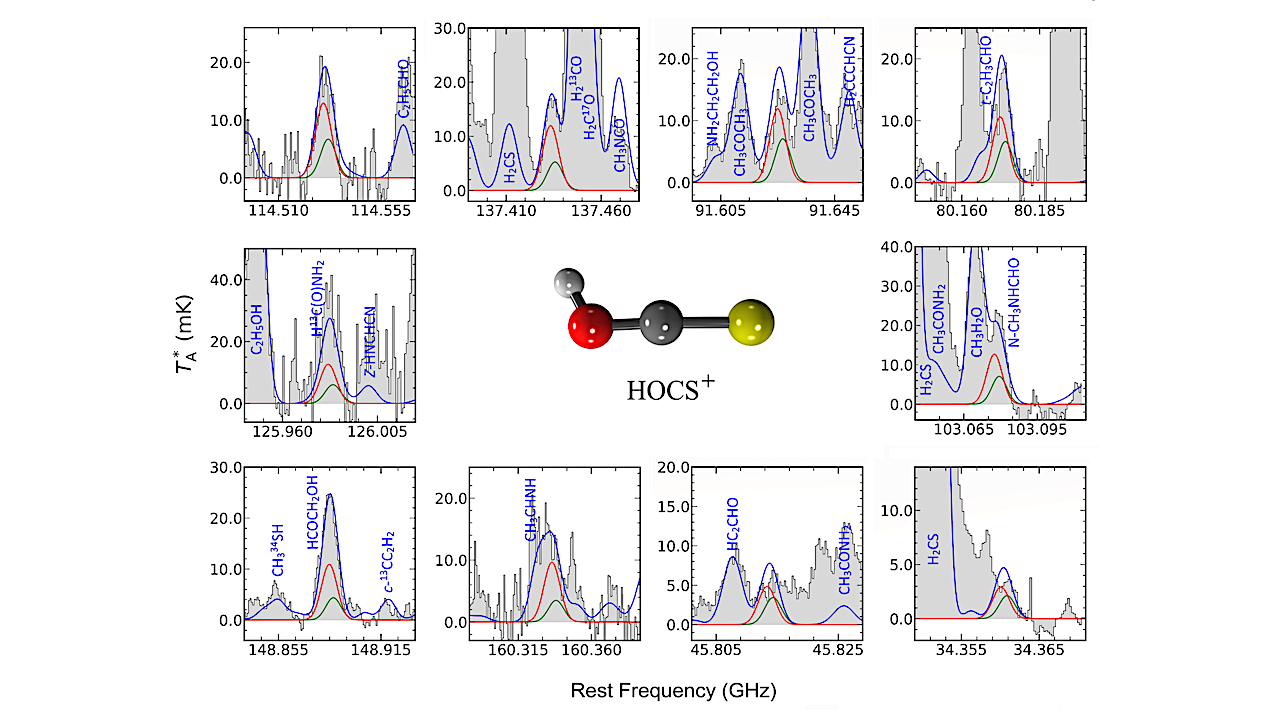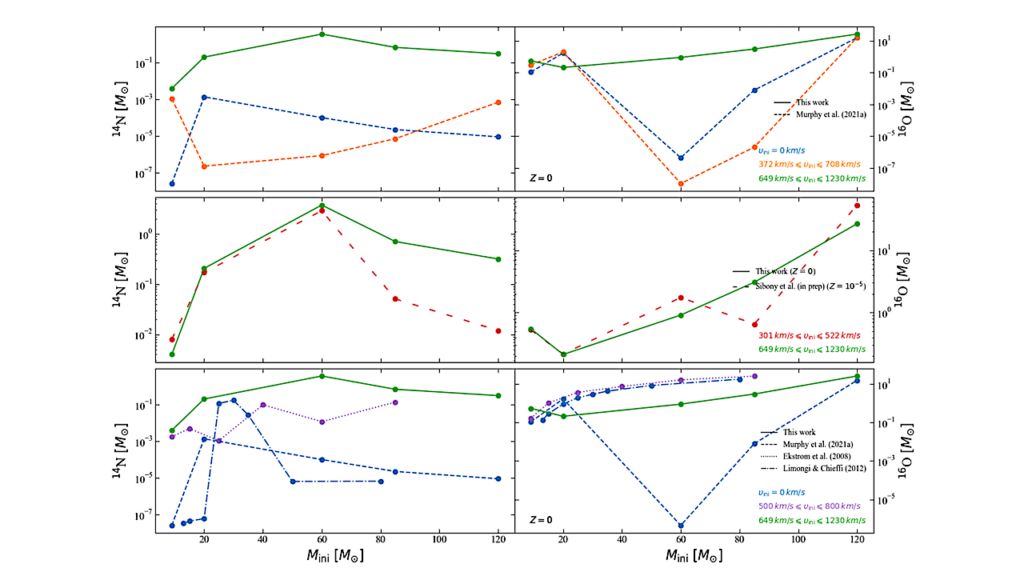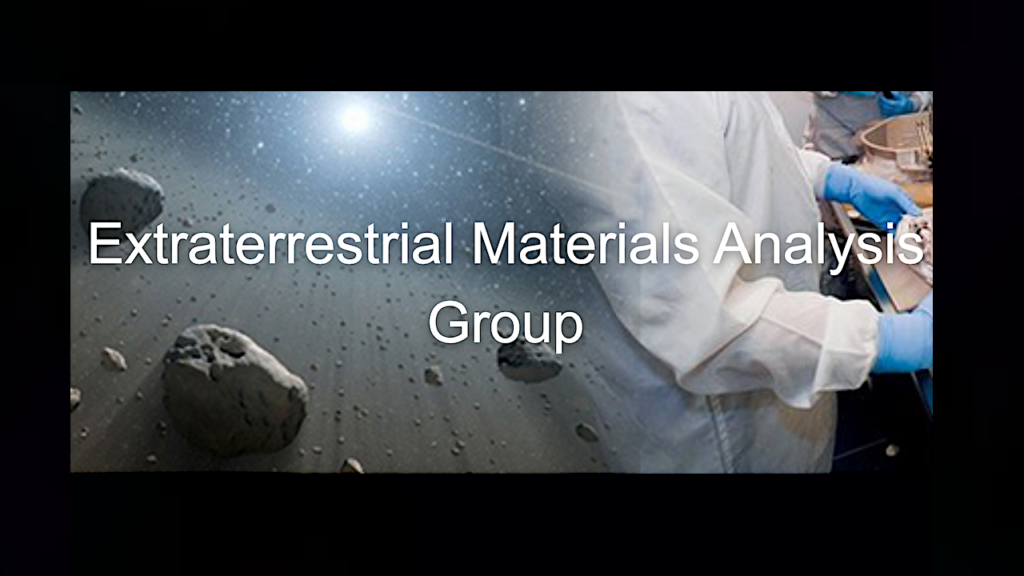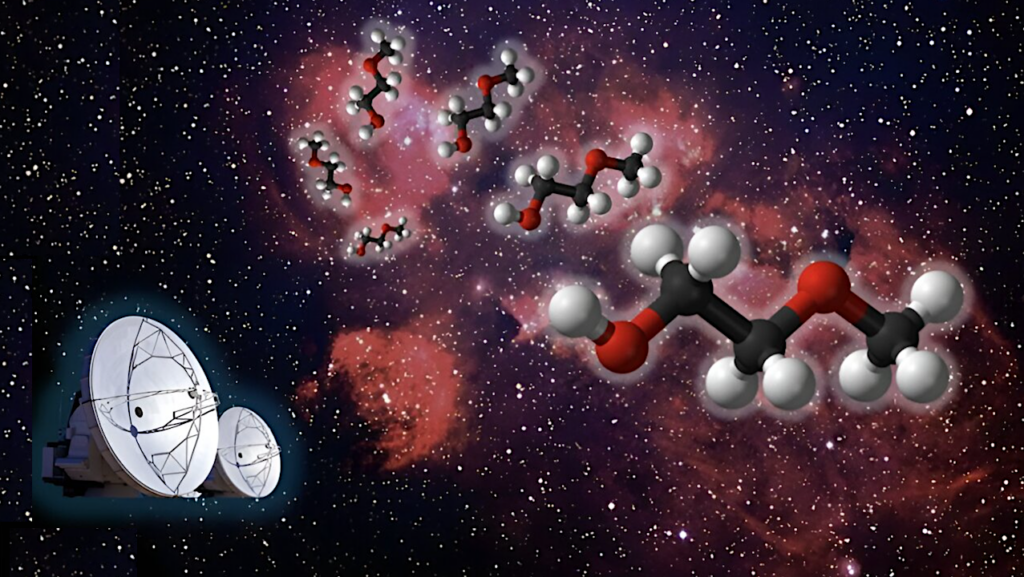Interstellar Detection Of O-protonated Carbonyl Sulfide, HOCS+

We present the first detection in space of O-protonated carbonyl sulfide HOCS+, in the midst of an ultradeep molecular line survey toward the G+0.693-0.027 molecular cloud.
From the observation of all Ka = 0 transitions ranging from Jlo = 2 to Jlo = 13 of HOCS+ covered by our survey, we derive a column density of N = (9 ± 2)×1012 cm−2, translating into a fractional abundance relative to H2 of ∼7×10−11. Conversely, the S-protonated HSCO+ isomer remains undetected, and we derive an upper limit to its abundance with respect to H2 of ≤3×10−11, a factor of ≥2.3 less abundant than HOCS+.
We obtain a HOCS+/OCS ratio of ∼2.5×10−3, in good agreement with the prediction of astrochemical models. These models show that one of the main chemical routes to the interstellar formation of HOCS+ is likely the protonation of OCS, which appears to be more efficient at the oxygen end. Also, we find that high values of cosmic-ray ionisation rates (10−15-10−14 s−1) are needed to reproduce the observed abundance of HOCS+.
In addition, we compare the O/S ratio across different interstellar environments. G+0.693-0.027 appears as the source with the lowest O/S ratio. We find a HOCO+/HOCS+ ratio of ∼31, in accordance with other O/S molecular pairs detected toward this region and also close to the O/S solar value (∼37). This fact indicates that S is not significantly depleted within this cloud due to the action of large-scale shocks, unlike in other sources where S-bearing species remain trapped on icy dust grains.
Miguel Sanz-Novo, Víctor M. Rivilla, Izaskun Jiménez-Serra, Jesús Martín-Pintado, Laura Colzi, Shaoshan Zeng, Andrés Megías, Álvaro López-Gallifa, Antonio Martínez-Henares, Sarah Massalkhi, Belén Tercero, Pablo de Vicente, David San Andrés, Sergio Martín, Miguel A. Requena-Torres
Comments: Forthcoming paper in The Astrophysical Journal (in press)
Subjects: Astrophysics of Galaxies (astro-ph.GA)
Cite as: arXiv:2402.15405 [astro-ph.GA] (or arXiv:2402.15405v1 [astro-ph.GA] for this version)
Submission history
From: Miguel Sanz-Novo
[v1] Fri, 23 Feb 2024 16:07:09 UTC (8,895 KB)
https://arxiv.org/abs/2402.15405
Astrobiology, Astrochemistry,








